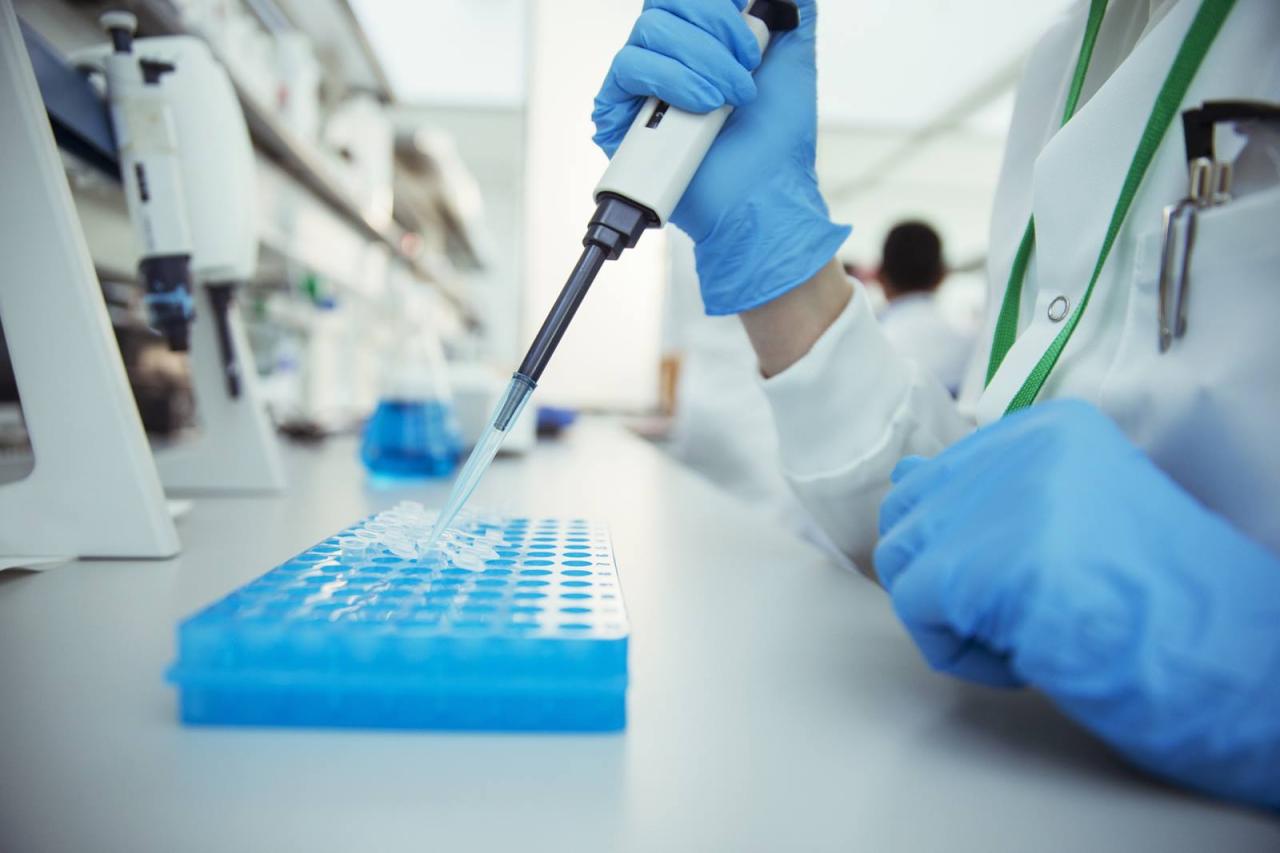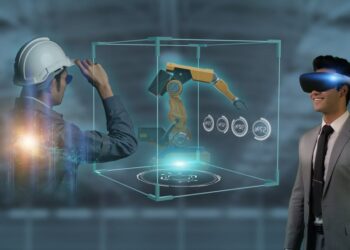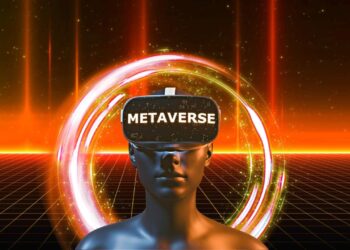The landscape of medicine is undergoing a profound transformation, driven by the relentless pace of innovation in biotechnology. Once confined to the realm of science fiction, the ability to manipulate biological systems at a fundamental level is now yielding unprecedented breakthroughs, promising to revolutionize the treatment of diseases that have long plagued humanity. From gene editing to personalized therapies and advanced diagnostics, the era of biotech cures awaited is not a distant dream but a rapidly unfolding reality. This isn’t just about managing symptoms; it’s about targeting the root causes of illness, offering hope for conditions once considered incurable, and fundamentally redefining human health and longevity.
The Foundation of Modern Medicine

At its core, biotechnology harnesses biological processes, organisms, or systems to produce products or technologies intended to improve human lives. This interdisciplinary field combines biology, chemistry, genetics, engineering, and computer science to unlock the secrets of life and apply them to medical challenges.
A. Historical Roots and Milestones:
* Ancient Fermentation: Early forms of biotechnology include brewing beer, making wine, and baking bread, all relying on microbial fermentation. This demonstrated human ability to leverage biological processes.
* Vaccination (Late 18th Century): Edward Jenner’s development of the smallpox vaccine, using cowpox, was a pivotal moment, showing how biological agents could be used to prevent disease on a large scale.
* Discovery of Penicillin (1928): Alexander Fleming’s accidental discovery of the antibiotic penicillin ushered in the age of antibiotics, revolutionizing the treatment of bacterial infections and dramatically reducing mortality rates.
* DNA Structure (1953): Watson and Crick’s elucidation of the double helix structure of DNA provided the molecular blueprint for life, opening the door for genetic engineering and modern molecular biology.
* Recombinant DNA Technology (1970s): The ability to cut and paste DNA from different organisms allowed scientists to engineer bacteria to produce human proteins, like insulin, marking the birth of modern biotechnology and the pharmaceutical industry’s shift towards biologics.
B. Key Pillars of Modern Biotechnology:
* Genetic Engineering: Modifying an organism’s genes using various techniques, including gene splicing, to introduce new traits or remove undesirable ones. This is foundational to many advanced therapies.
* Molecular Biology: Studying biological processes at the molecular level, including interactions between DNA, RNA, and proteins, and how they are regulated. This provides the insights needed for targeted interventions.
* Bioprocessing and Fermentation: Using living organisms (like bacteria or yeast) in controlled bioreactors to produce complex molecules such as proteins, enzymes, or pharmaceuticals on an industrial scale.
* Bioinformatics: The application of computational tools and statistics to analyze vast amounts of biological data (genomic sequences, protein structures), crucial for drug discovery and personalized medicine.
* Protein Engineering: Designing and modifying proteins to create new functions or improve existing ones, leading to novel therapeutic antibodies and enzymes.
Revolutionary Therapeutic Modalities
The power of modern biotechnology is most evident in the development of entirely new classes of therapies that go beyond traditional small-molecule drugs, often addressing diseases at their genetic or cellular origin.
A. Gene Therapy: Repairing the Blueprint of Life:
* Concept: Introducing, replacing, inactivating, or modifying a gene into a patient’s cells to treat or prevent disease. It directly addresses the genetic cause of many inherited disorders.
* Mechanism: Often uses modified viruses (viral vectors) to deliver the new or corrected gene into target cells. Non-viral methods are also being explored.
* Applications: Approved therapies exist for conditions like spinal muscular atrophy (SMA) and certain forms of inherited blindness. Promising research is ongoing for cystic fibrosis, Huntington’s disease, and various cancers.
* Challenges: Delivering genes safely and efficiently, potential for immune responses to viral vectors, high costs, and ensuring long-term efficacy without off-target effects.
* Future: Miniaturized gene delivery systems, more precise targeting, and in vivo (inside the body) gene editing hold immense promise.
B. CRISPR and Gene Editing: Precision Genetic Surgery:
* Concept: A revolutionary technology that allows scientists to make precise, targeted changes to DNA sequences, essentially “editing” the genome.
* Mechanism: Uses a “guide RNA” to locate a specific DNA sequence and an enzyme (often Cas9) to cut the DNA, allowing for insertion, deletion, or modification of genes.
* Advantages: Unprecedented precision, relative ease of use, and versatility compared to earlier gene-editing tools.
* Applications: Clinical trials are underway for sickle cell disease, beta-thalassemia, certain cancers, and inherited eye diseases. Research extends to treating HIV and even developing disease-resistant crops.
* Ethical Considerations: The power of gene editing raises significant ethical debates, particularly concerning germline editing (changes passed to future generations) and its potential societal implications.
* Future: More advanced CRISPR systems with even greater precision (e.g., base editing, prime editing), non-viral delivery methods, and broader applications for treating complex genetic diseases.
C. Cellular Therapies: Harnessing the Body’s Own Power:
* Concept: Involves administering live cells to a patient to treat or prevent a disease. These cells might replace damaged cells, modulate the immune system, or deliver therapeutic agents.
* CAR T-Cell Therapy: A leading example where a patient’s own T-cells (immune cells) are genetically engineered in the lab to recognize and attack cancer cells, then infused back into the patient.
* Stem Cell Therapies: Using pluripotent stem cells (like induced pluripotent stem cells – iPSCs) or adult stem cells to repair or replace damaged tissues and organs. Applications range from treating blood cancers to spinal cord injuries and neurological disorders.
* Organoids and Tissue Engineering: Growing miniature, functional organs (organoids) from stem cells in vitro for disease modeling, drug testing, and potentially as building blocks for future organ transplantation.
* Challenges: Manufacturing complexity, potential for immune rejection (for allogeneic therapies), safety concerns (e.g., cytokine release syndrome in CAR T), and high costs.
* Future: Off-the-shelf allogeneic cell therapies (from healthy donors), broader applications beyond cancer, and sophisticated tissue engineering for regenerative medicine.
D. Monoclonal Antibodies and Biologics: Targeted Therapeutics:
* Concept: Engineered antibodies that specifically target certain molecules in the body, such as cancer cells, inflammatory proteins, or pathogens. “Biologics” refer to a broader class of drugs derived from living organisms.
* Mechanism: These antibodies bind to specific targets, either blocking their function, flagging them for destruction by the immune system, or delivering a therapeutic payload (e.g., antibody-drug conjugates).
* Applications: Widely used in oncology (e.g., Herceptin, Keytruda), autoimmune diseases (e.g., Humira, Remicade), infectious diseases (e.g., Ebola treatment), and even migraine prevention.
* Advantages: High specificity, leading to fewer off-target side effects compared to traditional small-molecule drugs.
* Challenges: Production complexity, cold chain requirements, potential for immunogenicity (body reacting against the therapeutic antibody), and high development costs.
* Future: Bispecific antibodies (targeting two different molecules), next-generation antibody-drug conjugates, and broader use in infectious disease prevention and treatment.
E. RNA-Based Therapies: New Frontier in Genetic Medicine:
* Concept: Using RNA molecules to influence gene expression, either by blocking the production of disease-causing proteins or by instructing cells to produce beneficial ones.
* mRNA Vaccines: The most famous recent example (COVID-19 vaccines), where mRNA delivers instructions for cells to produce a viral protein, triggering an immune response.
* siRNA (Small Interfering RNA) and Antisense Oligonucleotides (ASOs): Designed to silence specific genes or alter gene splicing, used for conditions like Huntington’s disease, spinal muscular atrophy (SMA), and transthyretin amyloidosis.
* Advantages: High specificity, potential for rapid development (especially for vaccines), and flexibility in targeting various diseases.
* Challenges: Delivery to target cells, stability of RNA molecules, and potential off-target effects.
* Future: Broader application of mRNA for various vaccines (influenza, cancer), therapies for genetic disorders, and new approaches to infectious diseases.
Personalized Medicine and Diagnostics

Biotechnology is pivotal in shifting healthcare from a “one-size-fits-all” approach to highly personalized, preventative, and predictive medicine.
A. Genomic Medicine:
* Whole Genome Sequencing: Analyzing an individual’s entire genetic code to identify predispositions to diseases, predict drug responses, and diagnose rare genetic disorders.
* Pharmacogenomics: Using genetic information to predict how an individual will respond to specific drugs, enabling physicians to prescribe the most effective medication at the optimal dose, minimizing adverse reactions.
* Disease Risk Prediction: Identifying genetic markers associated with increased risk for common diseases (e.g., heart disease, diabetes, certain cancers), allowing for earlier intervention and lifestyle modifications.
B. Advanced Diagnostics:
* Liquid Biopsies: Non-invasive blood tests that detect cancer DNA or cells circulating in the blood. This allows for earlier cancer detection, monitoring treatment response, and detecting recurrence without invasive tissue biopsies.
* Companion Diagnostics: Tests that identify specific biomarkers to determine which patients are most likely to benefit from a particular targeted therapy. These are often developed in parallel with new drugs.
* Point-of-Care Diagnostics: Rapid, portable diagnostic tests that can be used outside traditional lab settings (e.g., at home, in clinics, or in remote areas), accelerating diagnosis and treatment decisions. Examples include rapid COVID-19 tests.
* CRISPR-Based Diagnostics: Emerging tools leveraging CRISPR for highly sensitive and specific detection of pathogens (viruses, bacteria) or genetic mutations, often with rapid results.
C. Microbiome Research and Therapies:
* Gut-Brain Axis: Understanding the complex interplay between the gut microbiome and various aspects of human health, including digestion, immunity, and even neurological and mental health.
* Fecal Microbiota Transplantation (FMT): An established therapy for recurrent Clostridioides difficile infection, demonstrating the power of modulating the microbiome.
* Next-Generation Probiotics and Prebiotics: Developing highly targeted microbial interventions or dietary compounds to modulate the microbiome for specific health benefits (e.g., improving gut health, boosting immunity).
* Challenges: Complexity of the microbiome, ensuring safety of interventions, and achieving consistent therapeutic effects.
Challenges in Biotech Innovation
Despite the incredible promise, the path from biotech breakthrough to widely available cure is fraught with significant scientific, regulatory, and economic challenges.
A. Scientific and Technical Hurdles:
* Specificity and Off-Target Effects: Ensuring that highly targeted therapies (like gene editing or CAR T-cells) act precisely on their intended targets without causing unintended damage to healthy cells or tissues.
* Delivery Mechanisms: Developing safe and efficient ways to deliver therapeutic genes, cells, or RNA molecules to the correct cells and tissues within the complex human body remains a major challenge.
* Immunogenicity: The body’s immune system can sometimes recognize therapeutic proteins, viral vectors, or even transplanted cells as foreign, leading to an immune response that reduces efficacy or causes adverse reactions.
* Manufacturing Complexity and Scalability: Producing advanced biotech therapies (especially cell and gene therapies) involves complex, often manual, and highly specialized manufacturing processes that are difficult and expensive to scale up for widespread use.
* Understanding Complex Diseases: Many chronic and complex diseases (e.g., Alzheimer’s, autoimmune disorders) involve multiple genes and pathways, making them challenging to treat with single-target therapies.
B. Regulatory and Approval Pathways:
* Novelty of Therapies: Regulatory bodies (e.g., FDA, EMA) face the challenge of evaluating completely new classes of therapies (like gene editing or cell therapies) for which traditional drug approval pathways may not be entirely suitable.
* Long-Term Safety and Efficacy: Assessing the long-term safety and durability of effect for therapies that permanently alter a patient’s genes or introduce living cells is a major regulatory concern, often requiring decades of follow-up.
* Standardization and Quality Control: Ensuring consistent quality and manufacturing standards for highly complex biological products across different production batches and facilities.
* Expedited Pathways vs. Thorough Review: Balancing the urgency of bringing life-saving therapies to patients with the need for rigorous scientific review to ensure safety and efficacy.
C. Economic and Accessibility Barriers:
* Exorbitant Costs: Many groundbreaking biotech therapies come with extremely high price tags (e.g., millions of dollars for a single dose of gene therapy), making them inaccessible to many patients and posing significant challenges for healthcare systems.
* Reimbursement Models: Healthcare payers and insurers struggle with how to effectively reimburse for therapies that offer a potential one-time cure but at a very high upfront cost, often shifting the cost burden.
* Global Equity: Ensuring equitable access to these advanced therapies, especially in low-income countries, where healthcare infrastructure and economic resources are limited.
* Intellectual Property: The complexity of biotech innovation often involves numerous patents, leading to licensing disputes and hindering broader access or development.
The Future of Medicine
Looking ahead, the trajectory of biotechnology points towards a future where disease prevention, precise intervention, and personalized care become the norm, extending healthy human lifespans and alleviating suffering on a global scale.
A. Preventative and Predictive Health:
* Genomic Screening: Routine genomic screening at birth or early in life to identify disease predispositions, enabling early preventative interventions and personalized lifestyle advice.
* Continuous Biomonitoring: Wearable and implantable biosensors that continuously monitor physiological parameters and biomarkers, detecting disease onset even before symptoms appear.
* AI-Powered Diagnostics: AI systems analyzing vast datasets (genomic, clinical, lifestyle) to predict disease risk and recommend highly personalized prevention strategies.
B. Advanced Therapeutic Modalities:
* In Vivo Gene Editing: Performing gene editing directly inside the patient’s body, eliminating the need for cell extraction and re-infusion, making therapies more accessible.
* Universal Donor Cells/Organs: Developing ‘off-the-shelf’ cell and organ therapies (e.g., from engineered stem cells) that are immune-compatible for any patient, eliminating the need for patient-specific manufacturing and reducing rejection risk.
* Multi-Targeted Therapies: Developing therapies that can simultaneously address multiple pathological pathways in complex diseases, leading to more comprehensive treatments.
* Engineered Microbiome Interventions: Precise engineering of gut microbes to produce therapeutic compounds or modulate immune responses for a wide range of conditions.
* Drug Discovery Acceleration: AI and robotics will dramatically accelerate the process of identifying new drug candidates, designing novel molecules, and optimizing therapeutic properties.
C. Ethical Frameworks and Societal Integration:
* Robust Regulatory Science: Continuous development of regulatory science and frameworks that can keep pace with the rapid advancements in biotechnology, ensuring safety while fostering innovation.
* Public Engagement and Education: Transparent public dialogue and education about the ethical implications of powerful biotech tools (e.g., gene editing) to build societal consensus and responsible governance.
* Global Access Strategies: Developing innovative funding models, partnerships, and tiered pricing strategies to ensure that life-saving biotech therapies are accessible to patients worldwide, regardless of economic status.
* Interdisciplinary Collaboration: Fostering deeper collaboration between biologists, engineers, computer scientists, ethicists, and policymakers to navigate the complex challenges and opportunities of the biotech era.
Conclusion
The promise of biotech cures awaited is not just about extending lives, but about enhancing their quality, freeing humanity from the burden of chronic and debilitating diseases. From the precision of gene editing and the power of cell therapies to the transformative potential of personalized medicine, biotechnology is poised to rewrite the future of healthcare. While significant scientific, regulatory, and economic hurdles remain, the relentless ingenuity of researchers and the increasing investment in this field paint a hopeful picture. As we stand at the precipice of this new medical era, the continued responsible and ethical development of biotechnology holds the key to unlocking treatments and cures that were once unimaginable, truly changing what it means to be healthy in the 21st century and beyond.












